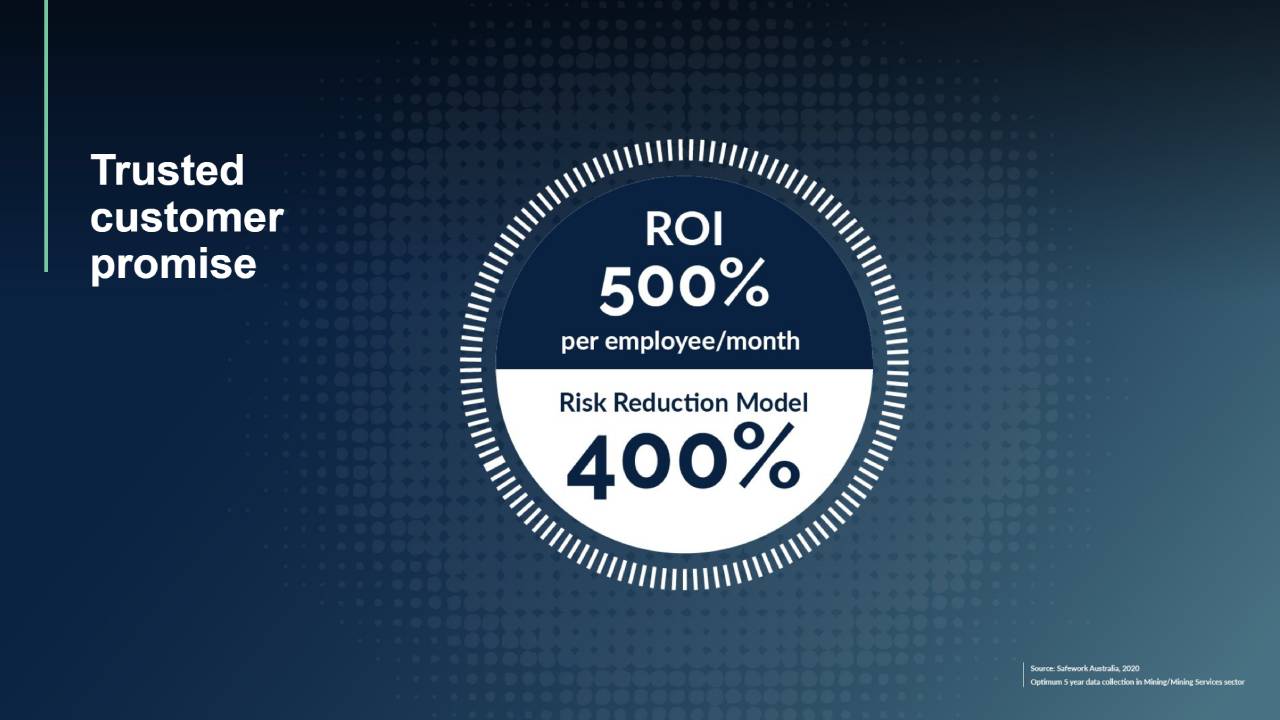
22 Sep Hard Return
What is the hard return on employee health, wellbeing and performance programs?
This question arises when such programs are viewed as a nice extra, not as a strategic element in running the business. However, there is a growing body of research, coupled with our own data that suggests this question will be asked less in the future.
The ROI will surprise you and the softer evidence linked to the benefits of such programs – will inspire you.
The research reports a ROI on comprehensive, integrated programs to be as high as 600%. The data Optimum has indicated a ROI of up to 500%. Those documented programs that generate such ROI have certain elements that are common. These common elements can certainly be replicated across all organisations. Think about how the following could be implemented in your business.
The most successful programs have
- Engaged leadership at all levels of the organisation.
- An overt alignment of the program to the company’s identity and aspirations.
- A program design that has a broad scope with high in relevance and quality.
- Key stakeholders identified within the organisation as well as external providers.
- Multiple levels of communication.
Historically, companies like J&J report a hard return of 270% ROI – this data was returned over a decade of integrated health, wellbeing and performance programs.
In another study – 57% of those workers who were classified as high cardiovascular risk, converted to low-risk status within a six-month program. This meant a saving of $1421 per individual. A control group within this study (meaning no program offered) showed no such improvements. The hard return on this study was for every $1 dollar invested in the program meant a saving of $6 dollars in health care costs.
A six-year study found that lost workdays declined by 80%. This corresponded to a 50% reduction in workers compensation insurance premiums.
Further to these data, those organisations with an integrated health wellbeing and performance program in place report lower staff attrition and turnover rates. In addition, the feedback we have from participants is that 57-71% believe their quality of work has improved, they are significantly healthier, practise better habits and feel better in themselves (64%-70%). Ninety-nine (99) percent of all participants support the company offering such a program.
No wonder there is great support from participants who have been part of such programs. Their heart health has improved significantly. Their head health is better managed. They are sleeping better. And these data sit alongside the financial benefits associated with such programs.
If you would enjoy a conversation about how to improve your ROI on such integrated programs, then contact us.

